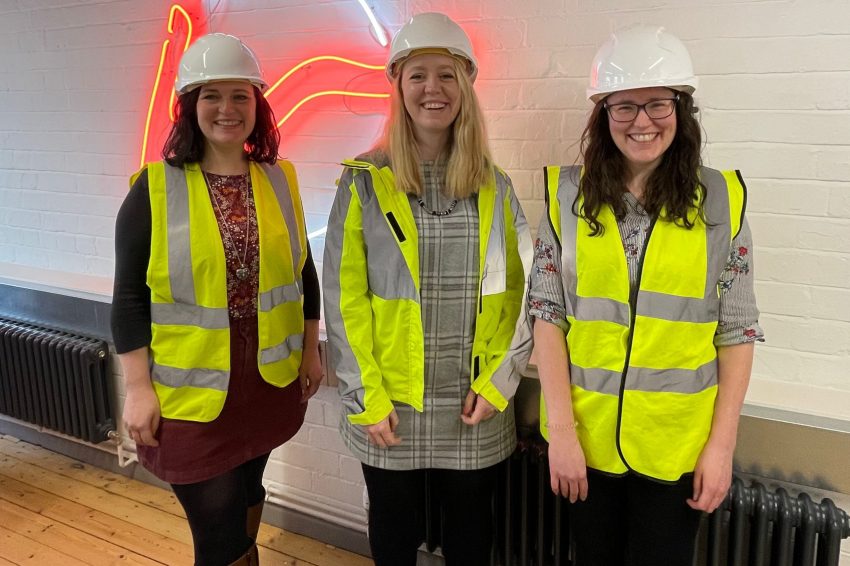It’s Women in Construction Week: where are the women?
Published - 3rd March 2023

If you were to guess what the gender split was in the construction sector in 2022, what would be your estimate? Would you expect the ratio to have shifted much in the past two decades?
I was surprised to learn that not only do women and those who identify as female comprise a mere 13 per cent of the construction industry’s workforce – what’s more, that percentage hasn’t really changed in the past 20 years. The percentage of women holding senior management positions in construction companies has likewise remained steady – and low – over the same timeframe.
This is despite the industry having long understood the need to diversify its workforce, and an increased move towards digital construction, which many expected would allow the sector to attract a more gender balanced talent pool.
Part of the reason for my surprise at these figures is that I am very rarely the only woman in the room in my work! Not only are there many women working in construction here at Harris Creative, but we are lucky enough to work with some brilliant women client-side as well. Perhaps it is because we occupy a unique space at the crossover between marketing and construction: but that is to oversimplify it and I would argue, undersells the level of sector knowledge you need to be able to work in construction marketing.
Where do women work in construction?
As women working in construction marketing, we need to be able to gain sufficient knowledge of what our clients do, and how they fit into the construction supply chain and specification process, in order to be able to communicate that effectively to our clients’ audiences. We need to know what issues our clients face and what challenges their customers need help in overcoming – so while we may ‘just’ be engaged in marketing, we need to know as much as the sales and business development teams whose work we often support.
In contrast to the construction sector, the marketing sector is skewed towards women – with most estimates placing this number around the 60 per cent mark.
This makes construction marketing professionals – especially female teams – doubly valuable to the companies they work for and with. It’s widely accepted that having a diverse range of perspectives involved in decision-making gives companies a commercial advantage, so as well as bringing their knowledge of marketing to the table, female construction marketing professionals are bringing different viewpoints and new ideas too.
Of course, marketing isn’t the only role that women occupy – and much like marketing, construction is shifting more toward digital and desk-based jobs, with factors such as the rise of MMC and BIM meaning that working in construction doesn’t have to mean getting your hands dirty – although women can and do want to work on the tools too! The challenge is ensuring that women are aware of the breadth of roles available to them in the sector, and that they are made to feel welcome and part of the team when they join construction companies.
What do women in construction want?
Put simply, I believe that women in construction want to have the opportunity to progress in their chosen career path, without being made to feel like an outsider.
This means that the construction sector has to put its money where its mouth is when it comes to inclusivity. Let’s start small: women need appropriate PPE that fits them properly. I was disappointed recently when stocking up on new PPE for our team to find that a major UK builders’ merchant only stocks high-viz vests in large or extra large sizes. Immediately this makes women feel that they are not welcome in this world.
But it goes beyond that, to include policies like ensuring there are gender inclusive toilet facilities on site, with period products available where possible. And on the macro level, construction must be more aware of issues that disproportionately affect women: we are more likely to be carers, whether that is for children or elderly parents, meaning that construction has to figure out its approach to flexible working or risk seeing talented women drain out of the industry over time.
There are still issues with sexism: in a report from Randstad entitled ‘Women In the Construction Industry 2020’ over 40 per cent of respondents said they had experienced inappropriate comments from male colleagues. A large number also reported being left out of social events.
Addressing these issues would help make the construction industry more attractive to women, and make them more likely to stick around and progress to those senior roles that we have seemingly been shut out of for 20 years.
Celebrate the good stuff
I want to take this moment to shout about some of the great initiatives our clients have enacted that respond to these issues – for example, Novus Property Solutions’ Women In Novus network has successfully seen the board introduce the company’s first menopause policy, and all Novus sites have committed to having inclusive toilet facilities and PPE available.
M-AR has tackled the issue of flexible working head-on, offering a compromise whereby factory staff work a four-day week while office staff have the option of hybrid working practices, ensuring everyone has more time at home.
And Arbor Forest Products recently partnered with The Diversity Trust to offer ‘Equality, Diversity, Equity and Inclusion’ training to the team as part of its GroWithArbor initiative.
And we’re fortunate enough to work with businesses that have women on the board of directors or at the company’s helm – and after all, seeing people who look like you taking the lead in a predominantly male industry like construction forges a path for younger women who want to find a way to the top. Let’s hope they get there in the next 20 years.
Harris »